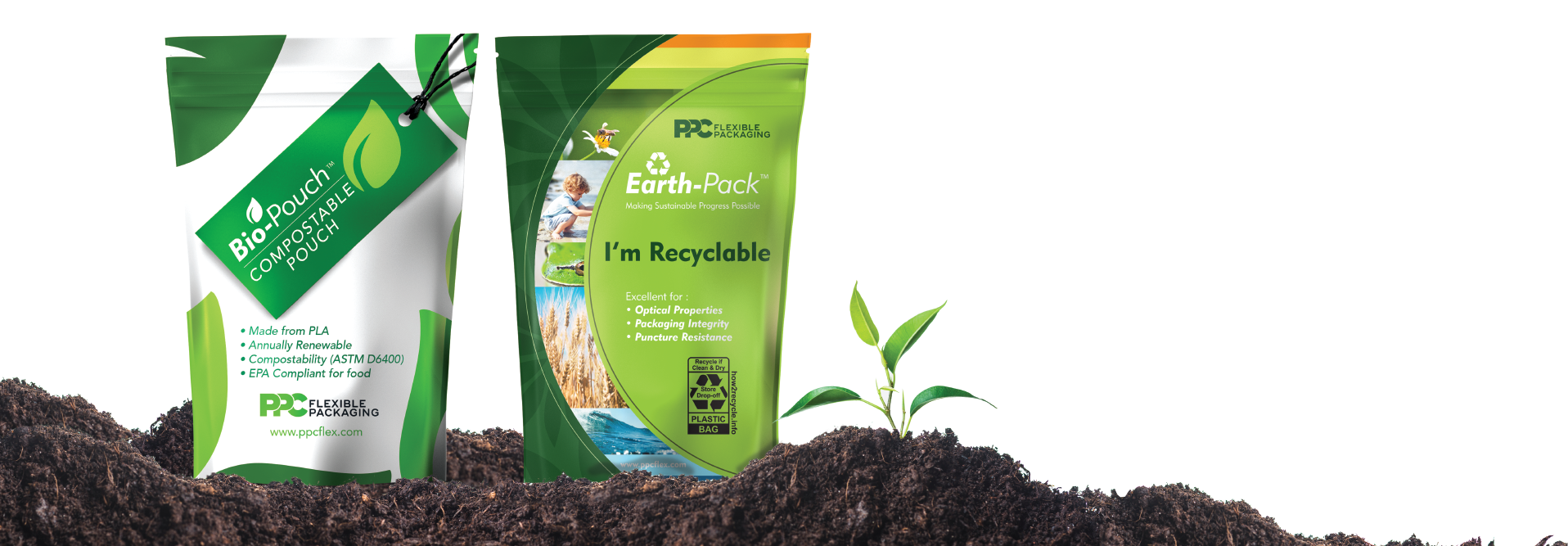The Whole Package:
Flexible Packaging… It’s More Sustainable Than You Might Think!
It’s not hard to see why. It seems like every day there’s a new study about the dangerous consequences of climate change, and the images of plastic waste filling our waterways, landfills, and harming wildlife are devastating. So it’s no wonder that consumers and companies alike are looking for greener and more sustainable packaging for their products.
While plastic has gotten a bad rap lately (not undesirably so) there are many eco-friendly advantages to using flexible packaging.
In this post we’ll focus on 3 big sustainable advantages: reduction in waste, energy use, and greenhouse gas emissions, minimizing the impact of transportation, and the decrease of food waste.
Flexible Packaging Reduces Waste, Energy Use, and Greenhouse Gas Emissions
When looking at the production of flexible packaging, it becomes clear that it is an eco-friendly choice compared to that of other packaging options.
According to FPA research, “Flexible packaging starts with less waste in the first place, greatly reducing landfill discards. Flexible packaging manufacturers use fewer natural resources in the creation of their packaging, including reduced water and energy consumption, greenhouse gas emissions, and volatile organic compounds.”
This can easily be seen when looking at beverage packaging as an example (info courtesy of the FPA):
To package 60 pounds of beverage you’d have to use:
- 50 pounds of glass
- 6 pounds of rigid PET
- 3 pounds of aluminum
- Only 1.5 pounds of flexible plastic
When looking further into the beverage study by the FPA it’s clear that flexible packaging is the most sustainable option. Flexible packaging not only requires less packaging, but it also consumes the least amount of energy, emits the least amount of CO2, and sends one of the lowest amounts of waste to landfills even after recycling rates are taken into consideration.
Another eco-advantage of flexible packaging is that it requires much less space to transport than alternative packaging. This is largely due to the fact that flexible materials are lightweight and usually shipped flat, or on a roll.
Not only is this good for mother nature because it cuts down on fuel use and emissions, but it has the added bonus of saving your company money.
Reduces Food-Waste
Food waste is a big concern when it comes to the environment. According to the U.N. Food and Agriculture Organization, 30 percent of food is wasted globally across the supply chain, contributing 8 percent of total global greenhouse gas emissions. In fact, if food waste were a country, it would come in third after the United States and China in terms of the impact it has on global warming.
Flexible packaging actually helps to prevent food waste by extending, and often doubling, product’s shelf life. For many products, multi-layer films with oxygen and moisture barriers are what extends the shelf life.
The life of fruits and vegetables is extend through controlled atmosphere packaging (CAP) which creates the appropriate atmosphere that allows produce to retain moisture longer and delays ripening (learn more about CAP and our capabilities here link to Get More brochure).
Vacuum sealing also helps prolong the longevity of products in flexible packaging for example the shelf life of beef is extended from four days to up to 30 days when vacuum packed in oxygen barrier film.
Wrapping It Up (yup, pun intended)
When considering the entire life cycle of flexible packaging, it’s clear that it is one of the most eco-friendly options.
Source:
https://www.flexpack.org/sustainable-packaging/energy-advantages/
https://www.washingtonpost.com/news/theworldpost/wp/2018/07/31/food-waste/
